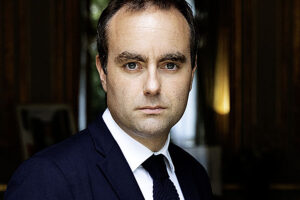
The resignation of the French Prime Minister, Sébastien Lecornu, on 6 October came after less than a month in office. Being the third prime minister under President Emmanuel Macron, this sparked a huge number of headlines and a great flapping of hands. The concern is that France will not be able to agree a budget for 2026, a task that Lecornu is now, again, trying to fulfil, after he was reappointed just days later.
The day after the resignation, Goldman Sachs’ Alexandre Stott wrote, “While the near-term political outlook is highly uncertain, unfolding events have raised our conviction in two features of our forecast. First, we continue to expect growth to run below trend (which we estimate at 1% in France) and we are lowering our 2026 growth forecast by 0.1pp to 0.8%. Second, we still expect to see little progress with reducing the government deficit. We look for some budget slippage into year-end and are raising our 2025 deficit forecast by 0.1pp to 5.5% of GDP. It also looks likely that France will start next year with a frozen (or at least partial) budget. In any case, deep political disagreements, slower growth and higher borrowing costs are likely to prevent significant progress, and we are raising our 2026 deficit forecast by 0.1pp to 5.3% of GDP.”
Lecornu’s reappointment, after calls for early elections even from the President’s allies, may cap these worries a little, but is hardly a salve.
France is not in bad shape economically but, like the US, there are concerns around its discipline. It is highly indebted and the sense that populist policies might be needed to support one politician or another’s career is a worry for the market. President Macron’s tax cuts after his election in 2018 are a case in point.
Unlike the US, France has a safety mechanism to prevent a government shutdown by rolling over the current budget in the event a new one is not agreed.
Despite panic in the press, the market’s level of response to this apparent disaster was relatively zen. Looking at median bid-ask spreads for the past few weeks, we see the cost of liquidity in high yield has fallen since May, only picking up slightly on the week of 5 October.
Whie bid-ask spreads have increased over the year in investment grade (IG) fairly consistently to August, they have fallen slightly since then, but jumped again week of 5 October, still below levels seen in mid-September.
Trading activity paints a different picture, with both volume and trade count increasing from August onwards, weekly trade count sitting in the 8,000-10,000 range for September and early October, while weekly volume rose to nearly €10 billion a barrier only broken four times so far in 2025.
High yield volumes and trade count growth have been even more pronounced since August but also dropped off on the week of 5 October, when Lecornu resigned.
The sanguine response to potential chaos may reflect in the market’s broadly calm attitude to other events such as unprecedented trade war volatility, real war in the Middle East and ongoing conflict in Ukraine. It appears investors are unpanicked, favouring a longer-term approach and avoiding knee jerk reactions.
Analysing the situation in France, the rapid reappointment of Lecornu may have restored some calm but equally it is notable market makers did not significantly increase their bid-ask spreads during the period of turmoil, suggesting the perceived risk was not great regardless of the headlines.
©Markets Media Europe 2025












